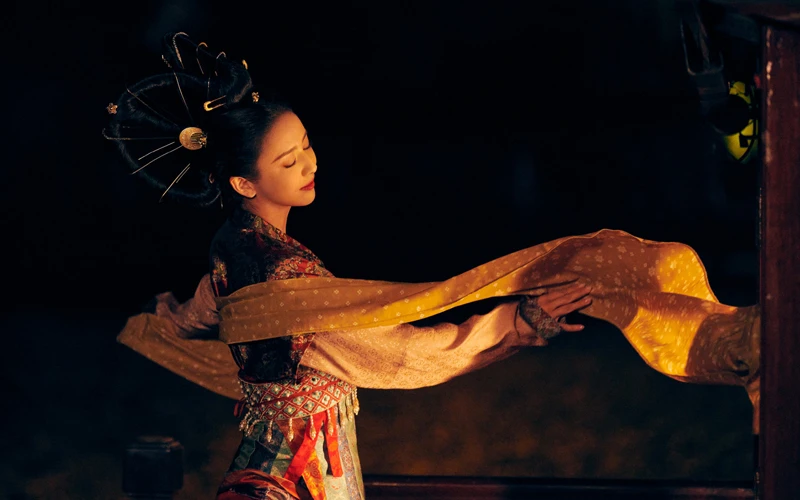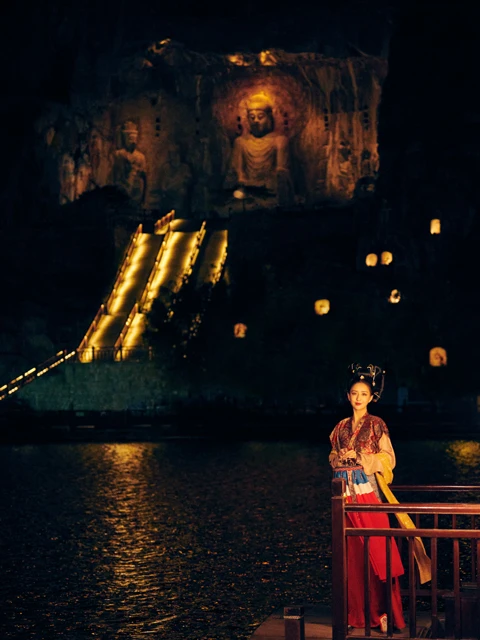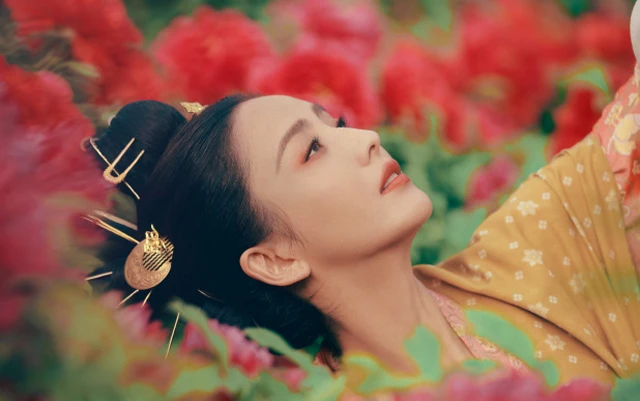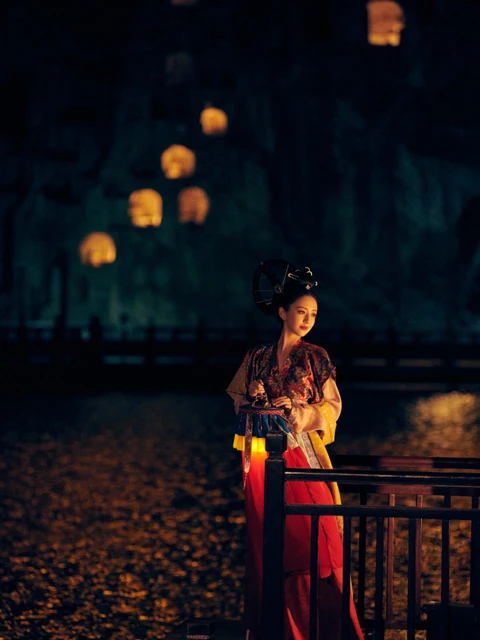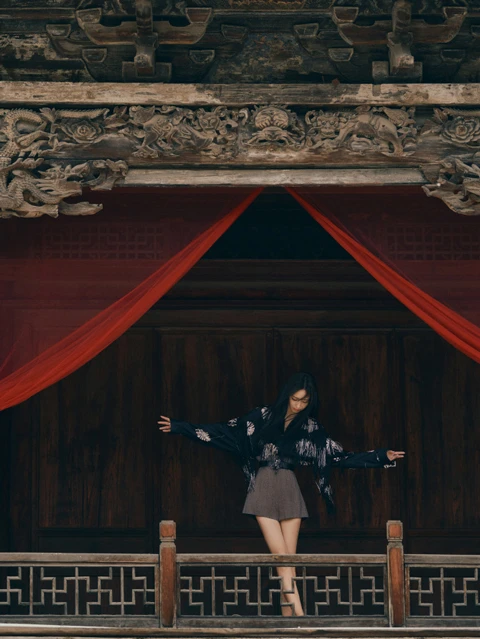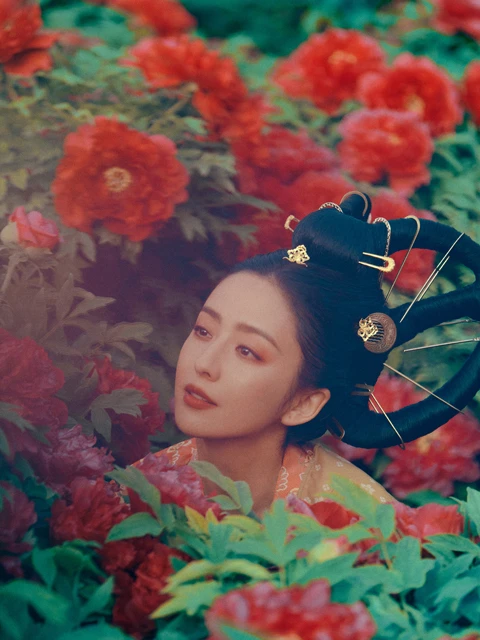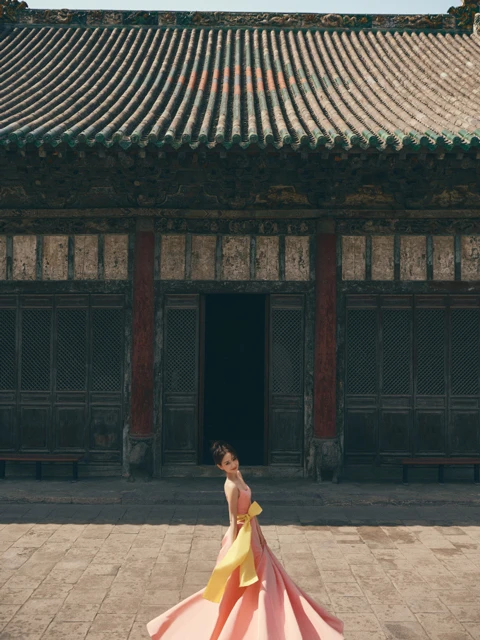Spring in Luoyang offers countless reasons to visit: feel the breeze by the Luo River, admire the late-blooming peonies, savor the street-side beef soup, and perhaps even encounter a celebrity. Not long ago, Tong Liya visited Luoyang, where she witnessed the millennia-old charm and blooming vitality of the city. When actress Tong Liya encounters the ancient capital that thrived through thirteen dynasties, what breathtaking scenes unfold? The April issue of "National Geographic Traveler," themed "Blossoming Luoyang," has the answer.
As night descends and the lanterns glow, the Longmen Grottoes light up with the brilliance of three thousand lamps, merging light and shadow art with the cave sculptures and natural scenery into a dazzling visual feast. Each moment in Luoyang's millennia-old history, from its landscapes to its cultural treasures, has traversed the passage of time to reach us today. Late at night, as boats glide past the Longmen Grottoes, fluttering garments and shimmering reflections on the water tell the city's thousand-year story.
Over the 5,000-year stretch of civilization, Luoyang has witnessed countless ebbs and flows, while peonies have intertwined with the city's history like silent witnesses, narrating the brilliance and splendor of Luoyang's past through their beauty. Every April and May, when peonies are in full bloom, it's as if one steps into a time machine, journeying back to the ancient, prosperous Luoyang. This time, Tong Liya, dressed in elegant attire, visited the Tianxiang Peony Garden to immerse herself in the legendary tale that the city and its peonies have co-authored.
A visit to the ancient city of Luoyang would be incomplete without strolling through old streets and admiring historic architecture. This time, Tong Liya and her entourage visited the Luoyang Shanxi-Shaanxi Assembly Hall, a representative trade facility along the ancient tea route built by merchants from Shanxi and Shaanxi. Majestic and meticulously designed, it is one of the few well-preserved early Qing-era architectural complexes in western Henan. Leveraging this ancient architectural group, Luoyang established the Museum of the Ancient Tea Route, inviting visitors to experience Luoyang's rich cultural heritage and savor the unique charm of historical remnants.
The magazine "National Geographic Traveler" continuously published multiple sets of photos featuring Tong Liya, themed "Blossoming Luoyang," with scenes shot at Longmen Grottoes, the Shanxi-Shaanxi Assembly Hall, and Tianxiang Peony Garden, embodying many "Luoyang elements." At Longmen Grottoes, Tong Liya is dressed in a Tang-style Hanfu, standing on a boat with her flowing skirt fluttering in the breeze.
Chen Shiyu, a Hanfu restoration advisor, costume historian, and director of the Chinese Costume Culture Research Association, provided insights into the Luoyang stories behind Tong Liya's Hanfu styling. The Hanfu she wore at Longmen Grottoes was a style popular during the Wu Zhou period, with a V-shaped neckline that opens lower compared to the U-shaped low-cut collar also prevalent in the Tang Dynasty. This design reveals more skin, indicating the distinct influence of Wu Zetian on women's fashion after her enthronement in Luoyang.
The red skirt paired with the top is poetically named "Pomegranate Skirt." After Emperor Taizong's death, Wu Zetian left the palace for Ganye Temple. To regain her chance of returning to the palace, she wrote the poem "Ruyi Niang," which included the line, "Don't believe these recent tears; open the box and see the pomegranate skirt." This is the same type of skirt that Tong Liya wore.
With this poem, Wu Zetian won over Emperor Gaozong Li Zhi, leading to her elevation as empress and subsequent rule. On top of the pomegranate skirt, Tong Liya wore a shorter skirt reaching from the waist to above the knees, resembling a modern apron. This is known as a "waist skirt." Chen Shiyu explained that layering long and short skirts was one of the fashion trends among Tang Dynasty women, confirming their love for layered dressing.
Interestingly, the "Hua Xia Attire Exhibition -Fashion of Wu Zetian" at Luoyang Museum features a Hanfu similar in style but different in color to the one Tong Liya wore, with the same structure but varied patterns and colors on the top. "We reconfigured the patterns based on the Hanfu in the Luoyang Museum," said Chen Shiyu.
The top of Tong Liya's Hanfu is made from Tang red lotus-patterned brocade. The double-ring bun hairstyle that she wore also has deep roots in Luoyang. Popular during the Tang and Song Dynasties, the style involves dividing the hair into two parts, tying them with silk ribbons into circular shapes on top or to the sides of the head.
The museum also houses a set of Tang pottery figurines with double buns, unearthed in Mengjin, depicting this hairstyle. The Hanfu and the Tang pottery figurines mentioned in the article are currently on display, so if you're interested, you can visit Luoyang Museum to appreciate them firsthand.
